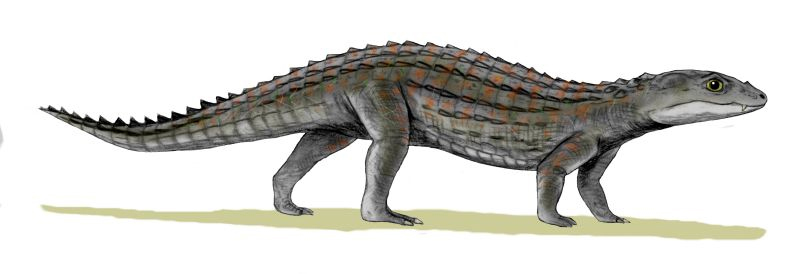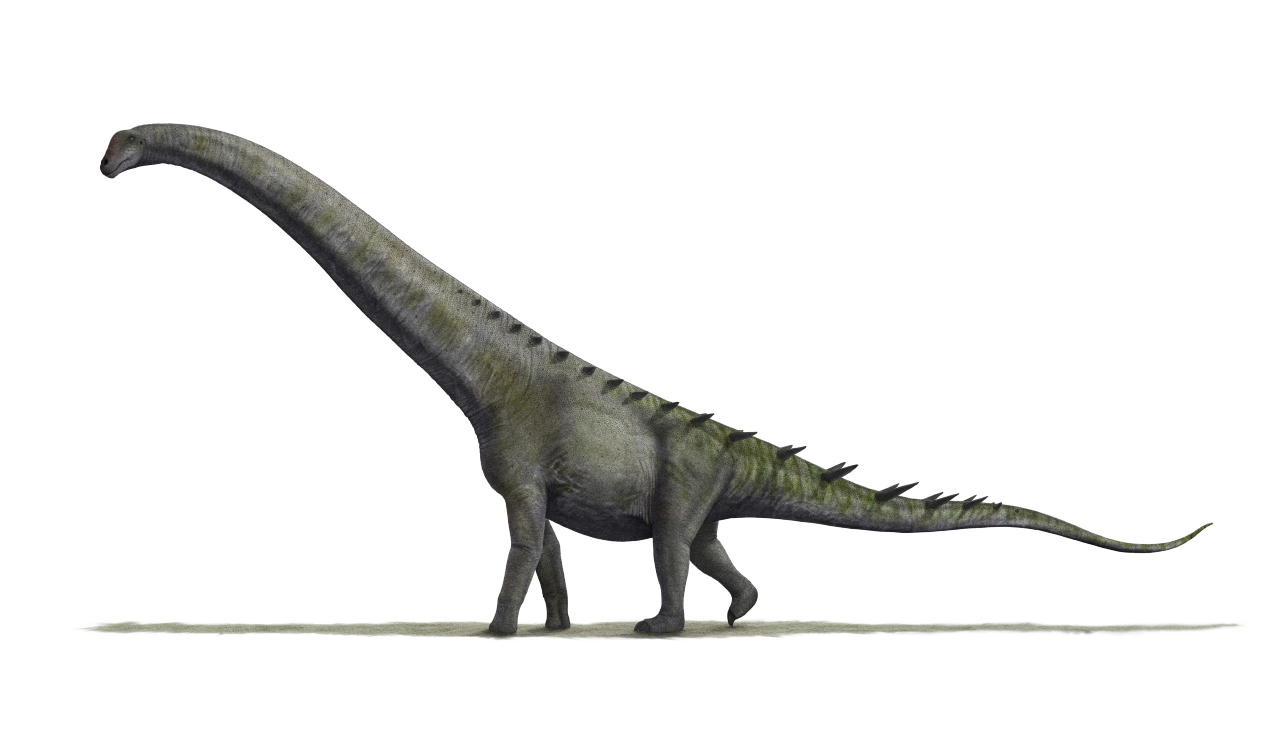|
Gasparinisuchus
''Gasparinisuchus'' is an extinct genus of peirosaurid notosuchian known from the Late Cretaceous (Santonian to early Campanian stage) of Neuquén and Mendoza Provinces, western central Argentina. It contains a single species, ''Gasparinisuchus peirosauroides''. Discovery ''Gasparinisuchus'' is known only from two individuals. The holotype MOZ 1750 PV represented by partial skull and lower jaws with teeth and various associated postcranial skeleton including vertebrae and dermal plates which are currently missing. It was originally described by Gasparini (1982) and Gasparini ''et al.'' (1991) and referred to '' Peirosaurus torminni''. MOZ 1750 PV was found in the Loma de la Lata locality of the Neuquén Province, Patagonia. It was originally reported as collected from sediments of the Rio Colorado Subgroup, Neuquén Group. Later, Hugo and Leanza (2001) noted that this specimen was actually collected from the underlying Portezuelo Formation of the Rio Neuqu� ... [...More Info...] [...Related Items...] OR: [Wikipedia] [Google] [Baidu] |
Peirosaurus Torminni
''Peirosaurus'' is an extinct genus of peirosaurid crocodylomorph known from the Late Cretaceous period (late Maastrichtian stage) of Minas Gerais, southern Brazil. It contains a single species, ''Peirosaurus torminni''. It is the type genus of the family Peirosauridae. Discovery ''Peirosaurus'' is known from the holotype DGM 433-R, fragmentary skull (left premaxilla bearing five teeth, isolated maxillary and dentary teeth and left palpebral bone) and partial postcranial skeleton including radius, ulna, left pubis and ischium, some presacral and a single caudal vertebrae, ribs, haemal arches and dermal plates. It was collected by Llewellyn Ivor Price in 1947-1949 at the Price Quarry 3, Peirópolis Site near Uberaba, in the Serra da Galga Formation ( Bauru Group), dating to the late Maastrichtian stage of the Late Cretaceous, about 68-66 million years ago. A partial skull and several postcranial elements such as vertebrae and dermal plates from the Bajo de la Carpa ... [...More Info...] [...Related Items...] OR: [Wikipedia] [Google] [Baidu] |
Peirosaurid
Peirosauridae is a Gondwanan family of mesoeucrocodylians that lived during the Cretaceous period. It was a clade of terrestrial crocodyliforms that evolved a rather dog-like skull, and were terrestrial carnivores. It was phylogenetically defined in 2004 as the most recent common ancestor of '' Peirosaurus'' and Lomasuchinae and all of its descendants. Lomasuchinae is a subfamily of peirosaurids that includes the genus '' Lomasuchus''. Lomasuchinae was defined in the same 2004 study as the most recent common ancestor of ''Lomasuchus'' and Mahajangasuchini and all of its descendants. Mahajangasuchini, also constructed in the study, was defined as the most recent common ancestor of ''Mahajangasuchus'' and '' Uberabasuchus'' and all of its descendants. However, all more recent phylogenetic analyses placed ''Mahajangasuchus'' within its own family, Mahajangasuchidae, along with the newly named '' Kaprosuchus''. Genera The following list of genera follows Martinelli ''et al.'', 2012 u ... [...More Info...] [...Related Items...] OR: [Wikipedia] [Google] [Baidu] |
Anacleto Formation
The Anacleto Formation is a geologic formation with outcrops in the Argentina, Argentine Patagonian provinces of Mendoza Province, Mendoza, Río Negro Province, Río Negro, and Neuquén Province, Neuquén. It is the youngest formation within the Neuquén Group and belongs to the Río Colorado Group, Río Colorado Subgroup. Formerly that subgroup was treated as a formation, and the Anacleto Formation was known as the Anacleto Member. The type locality of this formation lies west of the city of Neuquén. At its base, the Anacleto Formation conformably overlies the Bajo de la Carpa Formation, also of the Río Colorado Subgroup, and it is in turn unconformity, unconformably overlain by the Allen Formation of the younger Malargüe Group. The Anacleto Formation varies between thick, and consists mainly of claystones and mudstones, purple and dark red in color, deposited in fluvial, lacustrine and floodplain depositional environment, environments. Geodes are often found scattered thro ... [...More Info...] [...Related Items...] OR: [Wikipedia] [Google] [Baidu] |
Notosuchia
Notosuchia is a clade of primarily Gondwanan mesoeucrocodylian Crocodylomorpha, crocodylomorphs that lived during the Jurassic and Cretaceous. Some phylogeny, phylogenies recover Sebecosuchia as a clade within Notosuchia, others as a sister group (see #Phylogeny, below); if Sebecosuchia is included within Notosuchia its existence is pushed into the Late Miocene or Zanclean, Early Pliocene, about 7 to 4.5 million years ago. Fossils have been found from South America, Africa, Asia, and Europe. Notosuchia was a clade of terrestrial crocodilians that evolved a range of feeding behaviours, including herbivory (''Chimaerasuchus''), omnivory (''Simosuchus''), and terrestrial hypercarnivory (''Baurusuchus''). It included many members with highly derived traits unusual for crocodylomorphs, including Mammal, mammal-like teeth, flexible bands of shield-like body armor similar to those of armadillos (''Armadillosuchus''), and possibly fleshy cheeks and Pig, pig-like snouts (''Notosuchus''). Th ... [...More Info...] [...Related Items...] OR: [Wikipedia] [Google] [Baidu] |
Bajo De La Carpa Formation
The Bajo de la Carpa Formation is a geologic formation of the Neuquén Basin that outcrop, crops out in northern Patagonia, in the provinces of Río Negro Province, Río Negro and Neuquén Province, Neuquén, Argentina. It is the oldest of two formations belonging to the Río Colorado Subgroup within the Neuquén Group. Formerly, that subgroup was treated as a formation, and the Bajo de la Carpa Formation was known as the Bajo de la Carpa Member.Sánchez ''et al.'', 2006 At its base, this formation unconformity, conformably overlies the Plottier Formation of the older Río Neuquén Subgroup, and it is in turn overlain by the Anacleto Formation, the youngest and uppermost formation of the Neuquén Group.Fossa Mancini ''et al.'', 1938 The Bajo de la Carpa Formation can reach in thickness in some locations, and consists mainly of sandstones of various colors, all of fluvial origin, with thin layers of mudstone and siltstone in between. Geological features such as geodes, chemical no ... [...More Info...] [...Related Items...] OR: [Wikipedia] [Google] [Baidu] |
Late Cretaceous
The Late Cretaceous (100.5–66 Ma) is the more recent of two epochs into which the Cretaceous Period is divided in the geologic time scale. Rock strata from this epoch form the Upper Cretaceous Series. The Cretaceous is named after ''creta'', the Latin word for the white limestone known as chalk. The chalk of northern France and the white cliffs of south-eastern England date from the Cretaceous Period. Climate During the Late Cretaceous, the climate was warmer than present, although throughout the period a cooling trend is evident. The tropics became restricted to equatorial regions and northern latitudes experienced markedly more seasonal climatic conditions. Geography Due to plate tectonics, the Americas were gradually moving westward, causing the Atlantic Ocean to expand. The Western Interior Seaway divided North America into eastern and western halves; Appalachia and Laramidia. India maintained a northward course towards Asia. In the Southern Hemisphere, Aus ... [...More Info...] [...Related Items...] OR: [Wikipedia] [Google] [Baidu] |
Rio Neuquén Subgroup
Rio or Río is the Portuguese and Spanish word for "river". The word also exists in Italian, but is largely obsolete and used in a poetical or literary context to mean "stream". Rio, RIO or Río may also refer to: Places United States * Rio, Florida, a census-designated place * Rio, Georgia, an unincorporated community * Rio, Illinois, a village * Rio, a location in Deerpark, New York * Rio, Virginia, a community * Rio, West Virginia, a village * Rio, Wisconsin, a village * El Río, Las Piedras, Puerto Rico, a barrio Elsewhere * Rio de Janeiro, Brazil, often referred to as simply Rio * Rio, Italy, a municipality on the island of Elba in Tuscany * Rio, Greece, a community in suburban Patras People * Rio (given name) * Rio (surname) * Tina Yuzuki (born 1986), also known as Rio, Japanese AV idol Arts and entertainment Films * ''Rio'' (1939 film), starring Basil Rathbone * ''Rio'' (franchise), a film series and related media * ''Rio'' (2011 film), an animated film from 20t ... [...More Info...] [...Related Items...] OR: [Wikipedia] [Google] [Baidu] |
Neuquén Group
The Neuquén Group is a geologic unit, group of geologic formations found in Argentina. Rocks in the Neuquén Group fall within the Cenomanian to early Campanian stages of the Late Cretaceous Period. It overlies the older Lohan Cura Formation and is itself overlain by the younger Allen Formation of the Malargüe Group, separated from both by unconformity, unconformities, dated to 98 and 79 Ma respectively.Leanza et al., 2004, p. 63 Description Deposits have been located in the provinces of Argentina, provinces of Rio Negro Province, Río Negro, Neuquen Province, Neuquén, and Mendoza Province, Mendoza. Although several different types of environments are represented in various sections of the Neuquén Group, the dominant regime is alluvial deposition. Many dinosaur and other fossil types have been discovered in these sediments. Subdivision There are seven formations within the Neuquén Group. These are divided into three subgroups named after major rivers in the area. In some ... [...More Info...] [...Related Items...] OR: [Wikipedia] [Google] [Baidu] |
Portezuelo Formation
The Portezuelo Formation is a geologic formation of Late Cretaceous (Turonian, Late Turonian to Coniacian, Early Coniacian) age, outcropping in the Mendoza Province, Mendoza, Río Negro Province, Río Negro and Neuquén Province, Neuquén provinces of Argentina.Portezuelo Formation at Fossilworks.org It is the fourth-oldest formation in the Neuquén Group and the older of the two formations in the Río Neuquén Subgroup. Formerly, that subgroup was treated as a formation, and the Portezuelo Formation was known as the Portezuelo Member.Sánchez ''et al.'', 2006 Description The type locality of the Portezuelo Formation is the mountain range known as Sierra del Portezuelo in Neuquén Prov ...[...More Info...] [...Related Items...] OR: [Wikipedia] [Google] [Baidu] |
Centro Regional De Investigación Y Desarrollo Cultural
Centro may refer to: Places Brazil *Centro, Santa Maria, a neighborhood in Santa Maria, Rio Grande do Sul, Brazil * Centro, Porto Alegre, a neighborhood of Porto Alegre, Rio Grande do Sul, Brazil * Centro (Duque de Caxias), a neighborhood of Duque de Caxias, Rio de Janeiro, Brazil *, a neighborhood of Niterói, Rio de Janeiro, Brazil *Centro, Rio de Janeiro, a neighborhood of Rio de Janeiro, Brazil * Centro (São Paulo), the historic downtown of São Paulo, Brazil *, Aracaju, Sergipe, Brazil Mexico *Centro, Guadalajara, Jalisco, Mexico *Centro, Puerto Vallarta, Jalisco, Mexico * Centro Municipality, Tabasco, Mexico * Centro (borough), Tijuana, Baja California, Mexico * Centro, Yucatán, Mexico *Centro, the historic center of Mexico City, Mexico Elsewhere *Centro Habana, Cuba * Centro, Mandaue, a barangay in the Philippines *Centro Region, Portugal * Centro, Moca, Puerto Rico, a subdivision (also called a ''barrio'') of Moca, Puerto Rico *Centro (Madrid), a district of the city ... [...More Info...] [...Related Items...] OR: [Wikipedia] [Google] [Baidu] |
Coniacian
The Coniacian is an age or stage in the geologic timescale. It is a subdivision of the Late Cretaceous Epoch or Upper Cretaceous Series and spans the time between 89.8 ± 1 Ma and 86.3 ± 0.7 Ma (million years ago). The Coniacian is preceded by the Turonian and followed by the Santonian. Stratigraphic definitions The Coniacian is named after the city of Cognac in the French region of Saintonge. It was first defined by French geologist Henri Coquand in 1857. The base of the Coniacian Stage is at the first appearance of the inoceramid bivalve species '' Cremnoceramus deformis erectus''. The official reference profile for the base (a GSSP) is located in Salzgitter-Salder, Lower Saxony, Germany. The top of the Coniacian (the base of the Santonian Stage) is defined by the appearance of the inoceramid bivalve ''Cladoceramus undulatoplicatus''. The Coniacian overlaps the regional Emscherian Stage of Germany, which is roughly coeval with the Coniacian and Santonian Stages. In magn ... [...More Info...] [...Related Items...] OR: [Wikipedia] [Google] [Baidu] |




